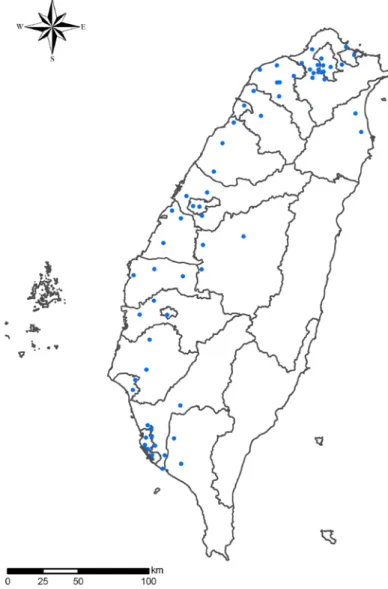Title: Health assessment of fine particle on cardiovascular diseases mortality
Wen-Chao Ho1, Meng-Hung Lin1, Hwa-Lung Yu2, Pau-Chung Chen3, Tsun-Jen Cheng3
1. Department of Public Health, China Medical University, Taichung, Taiwan 2. Department of Bioenvironmental Systems Engineering, National Taiwan
University, Taipei, Taiwan
3. Institute of Occupational Medicine and Industrial Hygiene, National Taiwan University, Taipei, Taiwan
Abstract
In recent years, Taiwan EPA air quality monitoring station data show that there is an improving trend in air quality, but the particles (particular matter, PM) concentration compared with the standard value is still high. The impact of fine suspended particles (PM2.5) on the environment and human health are more widely concerned recently, especially in developed countries. The National Morbidity Mortality Air Pollution Study, NMMAPS, in USA pointed out that the fine suspended particles PM2.5 had health impact on mortality more than
suspended particles PM10. Harvard Six Cities Study also showed that the fine suspended particles PM2.5 could increase the cardiovascular and respiratory diseases mortality. Furthermore, the component composition of fine suspended particulate and its interaction with ozone may have significant effects related to respiratory and cardiovascular disease mortality. Although the health effects of suspended particles have been studied in Taiwan, fine suspended particulate (PM2.5) is not well assessed. Nevertheless, PM2.5 may also interact with traffic pollutants and ozone and cause further harm to health. There is highly traffic density in Taiwan. In the meantime, the ozone episode day also continues to increase. The issues of fine suspended particulate (PM2.5) on health hazards, especially for respiratory and cardiovascular, have recently been raised.
Two main databases were assessed in this study. They were: 1) air pollution data, hourly air pollution data collected by using air monitoring stations from Taiwan EPA during 2006-2008, and 2) death registration database, study population collected from death registry system in Taiwan during 2006-2008. Study areas were the townships having air quality stations (Figure 1), total 64 townships included. Both long term and short term effects were assessed based on monthly diseases mortality analyses and case-crossover design analyses.
Repeated-Poisson regression and conditional logistic regression were used. Controlling risk factors included: sex, age, degree of urbanization, density of
cardiology physicians, temperature, and humidity.
The results based on the monthly mortality analysis showed that fine particle related to health impact at cool season was more consistent on all cause,
cardiovascular diseases, and respiratory diseases death in Taipei city. Increasing an interquartile of fine particle concentration (IQR: 9.29μg/m3) was related to increasing the mortality risk of the all cause, cardiovascular diseases, and respiratory diseases, 7%, 15%, and 18% respectively (Table 1, Figure 2). Furthermore, the case-crossover analysis results also showed the similar consistency at cool season in Taipei City. Increasing an interquartile of fine particle concentration (IQR: 18.13μg/m3), the mortality risk was increased 10-12% (Table 1, Figure 3). To summarize the findings of this study, there were: 1) it showed more consistent significant results of PM2.5 related to health effects in Taipei city, 2) there were some city-specific seasonal diseases that should be considered, especially in Kaohsiung (in the warm season) and
Taichung (in the cold season), and 3) the results of long-term (monthly average mortality) and short-term (daily average mortality) showed highly comparable. Further research was suggested.
Figure2. Risk and 95% confidence interval of cardiovascular and respiratory disease mortality by increasing an inter-quartile range of fine particle (PM2.5) monthly average concentration.
Figure 3. Risk and 95% confidence interval of cardiovascular and respiratory disease mortality by increasing an inter-quartile range of fine particle (PM2.5) daily average concentration

